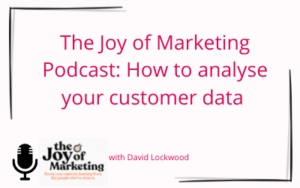With the second lockdown and the end of the Brexit transition period only adding to the disruption of 2020, it’s been interesting to talk to multi-channel retailers about their current confidence levels as we look ahead to 2021. We asked 20 UK brands how they are forecasting for growth as they prepare to push through the pandemonium and plan for the Spring/Summer season.
In line with IMRG’s October figures revealing a year-on-year increase in online retail of 35.7%, our retailers report strong online sales this year, contributing to an overall sense of optimism as they compile their 2021 forecasts. For many, the fact that online channels are holding fast in an otherwise turbulent economic environment has been the driving force for projecting a year-on-year increase for Spring/Summer 2021. Interestingly, given the abnormal peaks and troughs of 2020, many are using 2019 as the benchmark for their forecast.
Factors influencing forecasting this year focus on flexibility. An example is the shortening of supply chains for faster ordering and reordering where possible (up to 50% for one brand) to cope with fluctuating demand. Having learnt how to quickly respond to every eventuality during the first lockdown, retailers are definitely feeling more relaxed and more prepared this time around.
Allowing for an extended furlough
The recent extension of the furlough scheme until March 2021 brings with it a distinct possibility of further restrictions following the current lockdown. But what impact is this having on forecasting? Most retailers have confirmed they are budgeting for the worst-case scenario in terms of extended lockdown measures. In fact, several Spring/Summer forecasts allow for stores potentially remaining closed well into the new year. Instead, the focus will be on other channels in H1 – including online and click and collect – with a view to ramping up in-store sales activity again in H2.
Rather than furloughing all employees while in lockdown, the staff at one beauty brand are using the time to focus their efforts on clienteling. By getting to know their customers’ preferences via email and phone, the company can use this insight to deliver a more personalised customer experience throughout the restrictions and beyond.
Forecasting focus shifts from demand to supply
Perhaps the most striking observation over the past few months – in light of the unprecedented disruption – is the marked shift in marketing strategy. One retailer explained that forecasting has been completely different this year due to stock limitations. They placed their Spring/ Summer 2021 orders back in June, so they are forecasting based on stock availability and how long they need it to last, as much as forecasting customer demand. They are now confident they know what to do to create the demand to sell the level of stock they have at any given time. Indeed, here at Tapestry, we are helping several multi-channel retailers to balance customer growth with stock availability for the season.
An exception to this shift is a gifting brand that manufactures their own stock. They are not a constrained by demand; but rather by how fast they can make product to meet demand in the run-up to Christmas. However, with so many sales focused on Christmas, the retailer has a significant opportunity to ramp up production between January and June, while still being able to market for specific occasions such as Birthdays, Mother’s Day and Valentine’s Day.
Customer Growth Forecasting
It’s tricky to forecast in the best of times, so having more in your forecasting tool kit in a more challenging environment can build accuracy and confidence. A top down customer view to complement a bottom up marketing forecasting process can make for a stronger and more reliable forecast. Tapestry builds bespoke customer growth forecast models for retailers that segment customer by spend, assess movement between the segments over time and predicts database revenue assuming the same marketing strategy in the subsequent year. The model enables forecasting scenarios, for example: flexing customer recruitment numbers, increasing second order conversion via a more rigorous nursery programme and improving retention from a lapsing customer programme. Biscuiteers have used a customer growth model to plan for both Spring and the next five years, read how in this case study
A positive forecast for growth in 2021
When asked whether retailers were expecting strong growth, relative growth, a plateau or a decline, the unanimous answer was growth at some point during the year, although projected timeframes for growth did vary throughout the group.
Some retailers have predicted a strong Spring/Summer 2021 on the assumption that we will have overcome most of the 2020 hurdles by then. For others, the prospect of facing further difficulties in January and February has resulted in predictions for growth occurring later on, in the second half of 2021.
Retailers with a slightly older customer base reported that many of the customers that moved online in the first lockdown are not switching back to their previous shopping habits. New recruits are not returning to the high street as expected but are instead making repeat purchases online. This demographic alone should provide a good opportunity for growth next year, even with the extreme (and likely unrepeatable) response rates we saw at the beginning of lockdown taken out of the equation.
For smaller or less-established retailers, predictions for growth are more modest and evenly spread throughout 2021. They also depend on factors such as investment, expanding channels (for example launching into wholesale), and introducing new product categories.
Due to strong customer acquisition this year – coupled with high-performing online channels – the consensus is that we will see moderate retail growth in the first half of 2021, turning into strong growth thereafter, as the economy recovers from the events of 2020. Despite facing several different challenges and variables, the overall mantra among retailers is to react quickly to change and “just go for it” in 2021.




